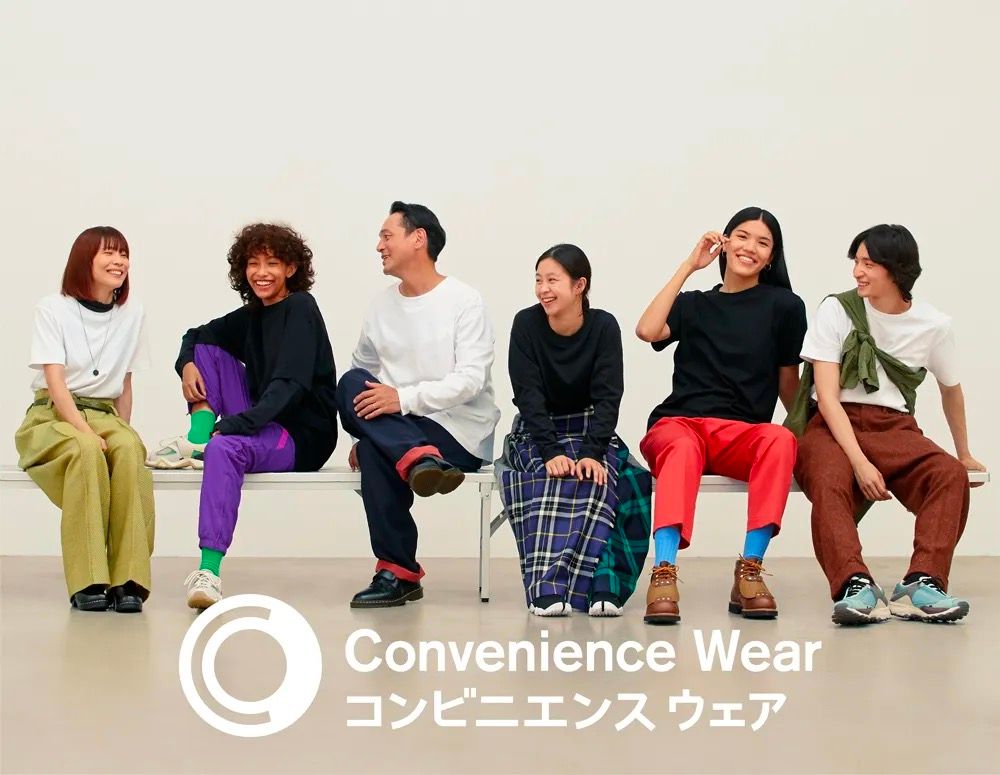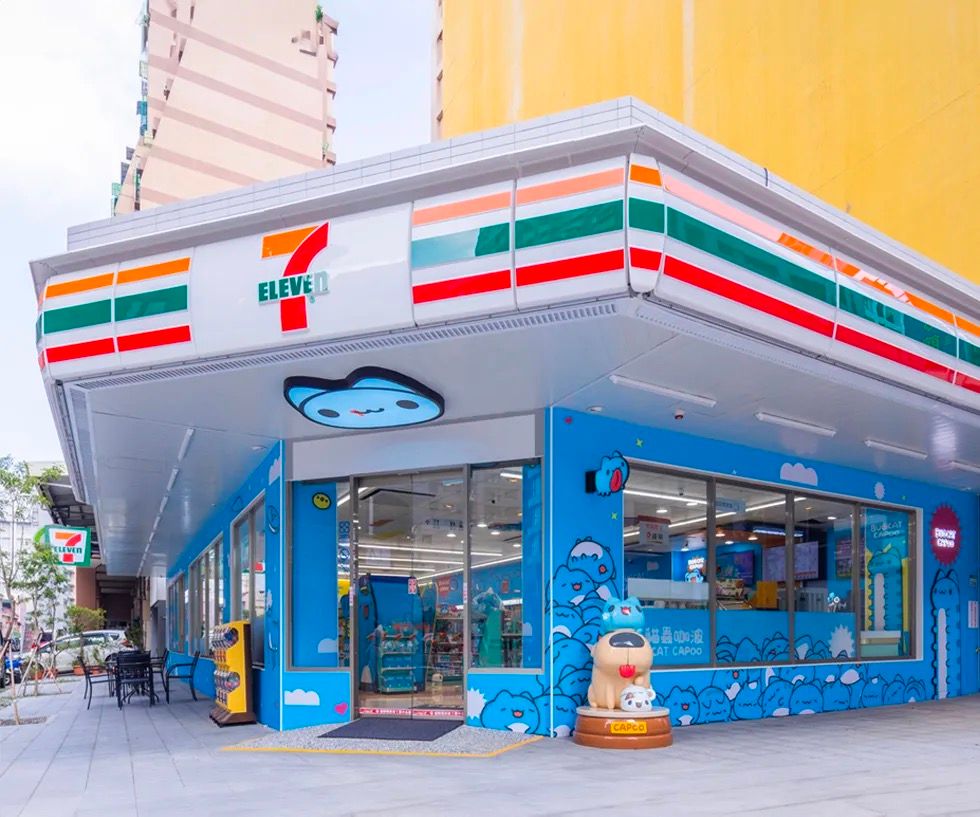Design Meets Daily Life: Family Mart’s Ambitious Fashion Venture
)
Did you know that Family Mart, the ubiquitous convenience store chain from Japan to China, is undergoing a "transformation"? One of the most common sights on city streets, Family Mart, is now offering its own line of clothing, including t-shirts, vests, cargo pants, and socks.
How serious is Family Mart about this foray into fashion design? They’ve enlisted the expertise of renowned Japanese designer Hiromichi Ochiai, branding this clothing line as Convenience Wear. The name itself hints at their commitment to providing stylish yet comfortable everyday wear, designed to be the clothes you want to wear every day.
But their ambitions don’t stop there.
Family Mart’s Fashion Week
In the heart of Yoyogi National Gymnasium II, a store conceptualized as the "convenience store of the future" stood at the center. Models of all ages, genders, and nationalities, dressed in various convenience wear, joyfully paraded in diverse groups: solos, pairs, and even families.

Without additional context, you might mistake this for a typical high-end fashion show. However, unlike most fashion weeks, the Convenience Wear runway featured not only famous actors like Riko Yagi, Kotaro Yoshida, and Naoki Matayoshi but also numerous amateur models.
Elderly elegant ladies, energetic students, and coffee-clutching office workers—all represented our daily lives. Convenience Wear integrates everyday clothing for all potential convenience store customers, with vibrant colors symbolizing a more inclusive, universal future. Family Mart aims to convey this universal value accurately and broadly.
Central to their design philosophy is the concept of "self-love"—"If some clothes are chosen for others, there should also be clothes you choose for yourself."
At the grand finale of this show, 30 employees from Family Mart franchises in Osaka, who had tested the Convenience Wear line, showcased their original uniforms. This trial phase preceded the nationwide rollout.
If you’ve never considered buying everyday clothes at a convenience store, this show might change your lifestyle and purchasing habits. Despite the buzz, can Family Mart’s Convenience Wear overcome the stigma of "clothes that don’t sell next to food"?
Making Buying Clothes at Convenience Stores the Norm
"Our goal is to establish a culture of buying clothes at convenience stores, just like how buying rice balls and coffee has become a daily routine."
When launching Convenience Wear, Family Mart stated that this series aims to revolutionize how people buy everyday clothes at convenience stores, not just for emergencies. Their design ethos emphasizes brightening daily life with gender-neutral, reusable packaging. They are committed to continually embracing new challenges to enhance people's happiness.
"When it comes to convenience store clothes, many think of undergarments, catering to a specific need; or items bought out of necessity by those who missed the last train. While clear demand is not a bad thing, if we can create clothes that people choose and use long-term rather than as a last resort, we can spark a revolution."
Family Mart believes only convenience stores can offer "a new lifestyle anytime, anywhere." Their products are priced incredibly low, even making competitors like Uniqlo and Muji blush. These innovative, bright products don’t look like typical convenience store apparel but rather seem perfectly suited to be there.
Interestingly, the first to buy Convenience Wear weren’t the general public but local fashion enthusiasts. On launch day, items at Azabu Dai Hills were sold out. Some are willing to wait for additional stock, considering distributing products nationwide.

Credit goes to the designer behind Convenience Wear, Hiromichi Ochiai, also the founder of the brand Facetasm. Since being selected as an LVMH Prize finalist by Karl Lagerfeld, the industry has been enamored with this innovative brand, which blends luxury with streetwear, Japanese tailoring with Western pop culture. “Like a child who insists on dressing up, Facetasm brings a smile, reminding you of the joy of play.”
Although Facetasm and Convenience Wear are stylistically distinct, why did Ochiai take on this project?
"As a fashion designer, I believe it’s necessary to showcase our pure creativity to more people. My experience designing the ceremony costumes for the 2016 Rio Olympics closure inspired me to expand fashion’s new values and possibilities. When Family Mart called, I immediately agreed. In a struggling fashion industry, it’s crucial for creators to point the way forward. We hope to offer new possibilities for fashion designers through Family Mart, which serves over 5 billion users annually. With approximately 16,600 stores nationwide, Family Mart can propose lifestyles on a scale that fashion brands can’t. That’s why I wanted to give it a try."
Ultimately, it’s not just fashion enthusiasts who will buy these clothes. Ochiai’s designs are accessible and adaptable to urban, residential, and various environments, perfectly fitting the convenience store aesthetic.

Among the numerous products, Ochiai finds the socks most interesting. “As a designer, I find convenience stores intriguing. I proposed extending the logo idea, believing we could give the iconic green, blue, and white stripes unique new value.”
The success of Convenience Wear has not only alarmed 7-Eleven but also other major clothing brands, due to “the economics of a pair of socks.”
Family Mart’s Fashion Move: Even Uniqlo is Concerned
Reports suggest Fast Retailing Co. and 7-Eleven plan to establish a broad partnership this year, potentially turning 7-Eleven stores in Japan into pickup points for Uniqlo online purchases.
7-Eleven has long dominated Japan’s convenience store market with a 40% share, being one of Japan’s most profitable retailers. As Japan integrates online and offline stores into a smartphone-connected world, convenience stores are poised to become key retail distribution points. This will boost customer traffic. Investrust CEO Hiroyuki Fukunaga said, “If people can buy Uniqlo clothes at 7-Eleven, it will also boost 7-Eleven’s sales.”

Convenience stores have always emphasized “convenience” in terms of time, products, locations, and payment methods. With convenience as a commonality, brands must think about their differentiating factors. This is why Family Mart, struggling to compete head-on with 7-Eleven, has turned to design-driven transformation, finding a new business model.
Family Mart operates about 16,300 stores in Japan, second only to 7-Eleven. As of January 2024, Family Mart had 2,684 stores in China, almost three times Uniqlo’s 925 stores.
Family Mart’s market entry with a pair of socks might surpass our expectations: “If every Family Mart store needs to supply a pair of socks, that alone requires 16,000 pairs, meaning at least 16,000 pairs in production. The more clothing and textiles produced, the lower the cost per item, and the more stable the quality. The result is easily producing low-cost, high-quality products.” (Lianshang)
Influenced by the "economics of a pair of socks," Family Mart’s sales increased by 60% by the end of 2023, expanding Convenience Wear to over 100 products, according to Asahi Shimbun.
Family Mart might be spearheading a revolution in new purchasing habits right now.

